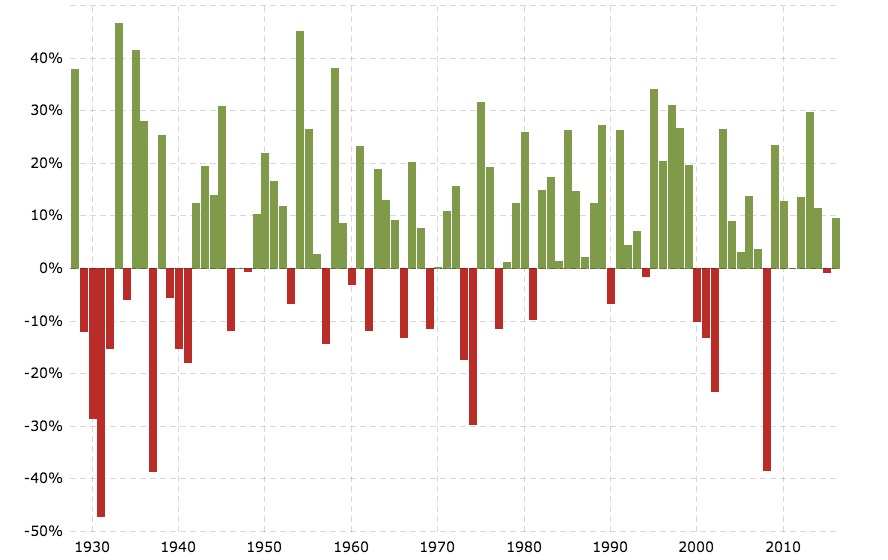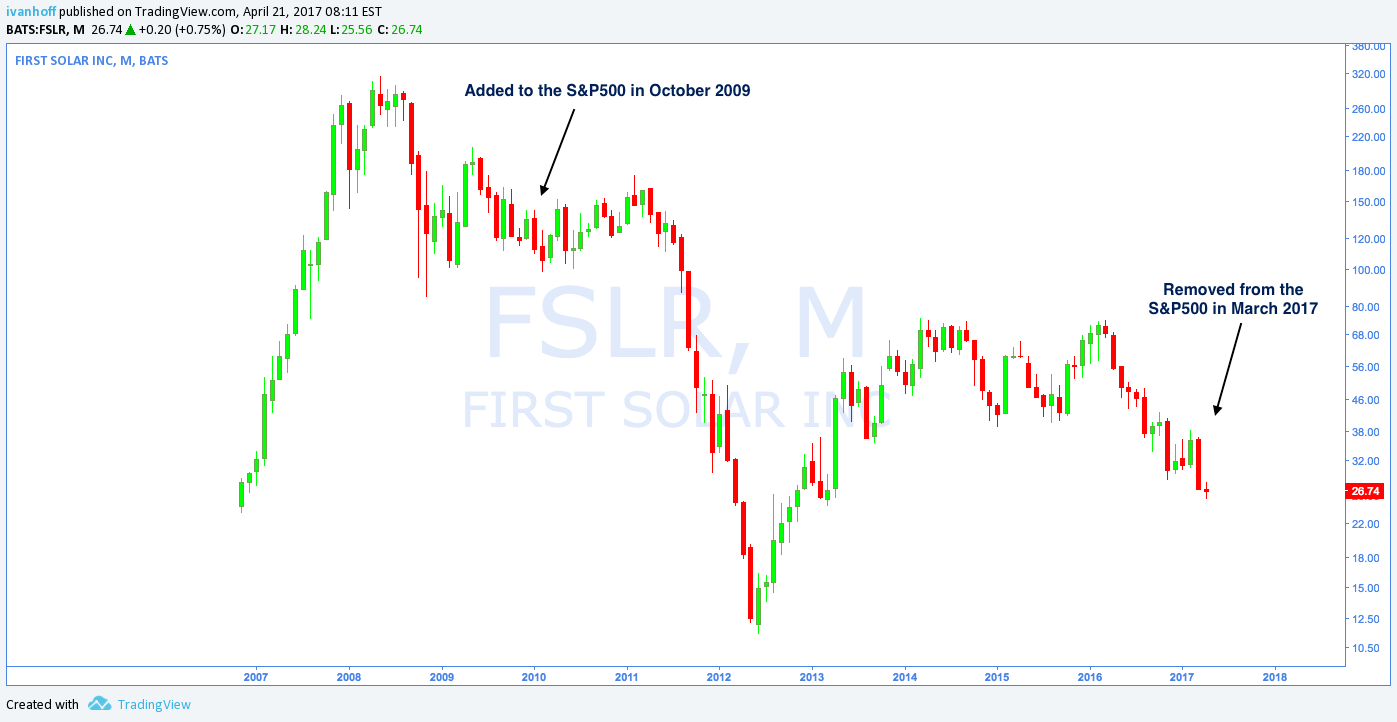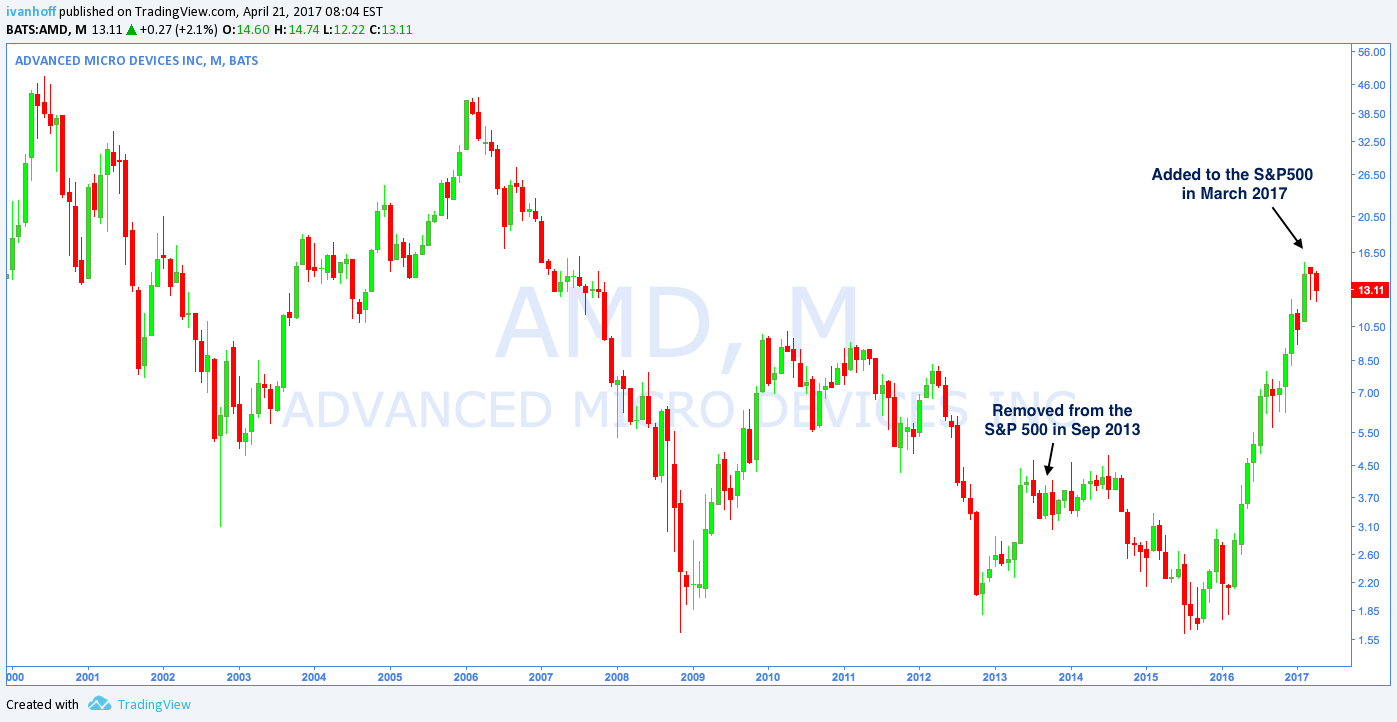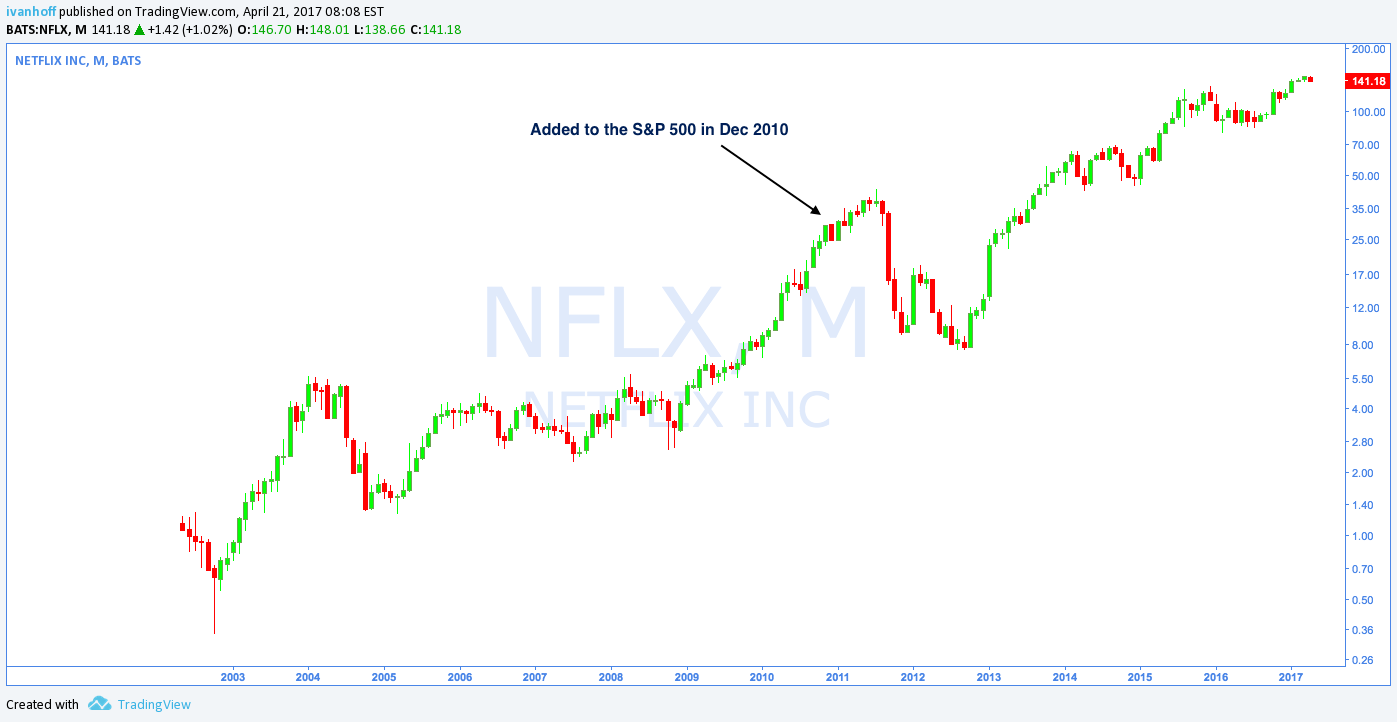No one knows how long a trend can last. I sold $AEIS in the mid-40s last year becz it was overbought. It’s $75 today pic.twitter.com/xLc8xDPkyX
— ivanhoff (@ivanhoff) April 27, 2017
- Trend following is easy only in hindsight. No one has a clue how long a trend can last and what profits it can deliver. No one can sell at the top consistently.
2. You have to be willing to give up 20%-25% of the gains in order to catch a complete move in a strong momentum name.
3. Holding strong stocks in a bull market can make you a lot of money but it can chop you into pieces during range bound and corrective markets.
4. There are different time frames in trend following – some use monthly, weekly, daily, hourly, 30 min or even a 5 min chart. Figure out what game you want to play in the market. Do you want to catch a dozen 50% to 100% multi-week gainers in a year or do you want to capture hundreds of short-term 5% to 20% gainers in a year? The former requires less time in front of a computer but it comes at a steep price – you have to be content with being wrong very often (more than 60% of the time) and you have to be able to stomach deep drawdowns in your portfolio. The latter approach is also known as swing trading. Its success rate varies between 40% and 80% depending on the market environment. There is not just one type of swing trading- there is buying breakouts, dips, buying in anticipation of a move, mean reversion, etc. You can learn more about my approach to swing trading in my books Top 10 Trading Setups and The 5 Secrets to Highly Profitable Swing Trading or you can watch me do it on marketwisdom.com.
5. The best time to enter a long-term trend is right after a major market correction. The second best time is after an earnings-related breakout.
6. Pay attention to industry-related moves. When an entire industry starts to break out or break down, there’s usually a strong catalyst that is likely to sustain trends for multiple months.
7. It is far easier to find a trend than to ride it long enough to make a difference in your returns.
8. Figuring out when and how to sell can be as much an art as a science. Sometimes, being a contrarian means staying with a trend.
9. It is ok to take partial profits on strength. It is ok to add to your position once it sets up properly again.
10. There is trend following on the short side as well but very few do it. Most momentum stocks give up 50% to 80% of their upside moves. Catching a top is very hard and personally, I don’t know how to do it consistently. Shorting ex-momentum stocks after they set up below their 50 or 200-day moving averages offers a lot better success rate and risk/reward.



